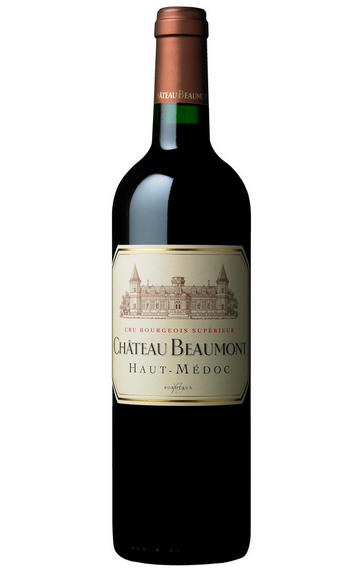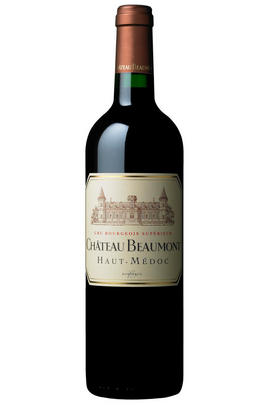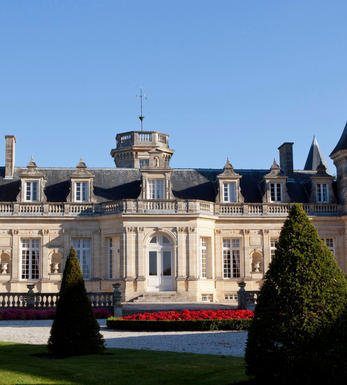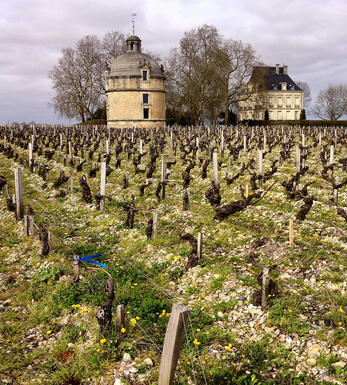
2016 Château Beaumont, Haut-Médoc, Bordeaux

Critics reviews
The 2016 Beaumont has quite a powerful bouquet with dense black fruit, boysenberry and cedar, traces of pencil lead developing with aeration. The palate is medium-bodied with fine tannin, quite spicy compared to its peers, then it reins everything back in for what is a refined finish. Classy stuff, but I would afford this a couple of years in bottle. Tasted at the Cru Bourgeois tasting in London.
Drink 2021 - 2035
Neal Martin, vinous.com (Oct 2018)
A classy cru bourgeois from Cussac, just south of St-Julien. With virtually equal shares of Cabernet Sauvignon and Merlot, spiced up with 3% Petit Verdot, this is a suave Haut-Médoc with bramble fruit and classic, cool Bordeaux tannins, while retaining the generosity and balance of the 2016 vintage.
Drink 2021 - 2026
Andy Howard MW, Decanter.com (Apr 2020)
About this WINE

Chateau Beaumont
Château Beaumont is a large Cru Bourgeois estate in the Haut-Médoc which can trace its history back to 1824. Beaumont was purchased by the GMF Insurance Company in 1986 - 3 years later, GMF teamed up with Suntory to form the company Grands Millésimes de France which now owns Beaumont.
Beaumont has 105 hectares of vineyards and the blend typically is 60% Cabernet Sauvignon, 35% Merlot, with a small proportion of Cabernet Franc, and Petit Verdot. The wines are matured in oak barrels (one-third new) for between 12 and 18 months, depending on the vintage.
Beaumont produces medium to full bodied, dry, well-balanced clarets, with firm but supple tannins, and wonderful cassis-scented, sweet, black fruit. Quintessential gentlemen's claret.

Haut-Medoc
Despite being as visually unprepossessing as the rest of the Médoc (despite its grandiose châteaux) this large red-wine appellation of Haut-Médoc is home to some of the world’s greatest wines. Its 4,500 hectares of vineyards form a largely continuous strip that follows the Gironde from St Seurin-de-Cadourne, just north of St Estèphe, to Blanquefort in the northern suburbs of Bordeaux.
All the great communes of the Left Bank fall within its boundaries: Margaux, St Julien, Pauillac and St Estèphe, as well as the up and coming Moulis and Listrac. These are labelled under their own, more illustrious and expensive appellation names. Châteaux labelled simply as Haut-Médoc rarely reach such heights, but nevertheless offer consistently good quality and offer some of the best value in Bordeaux.
Haut-Médoc wines tend to be firm and fine with generous fruit and a nice minerality – what many would consider ‘classic Claret’. They come from loftier vineyards and offer higher quality and more complexity than those labelled simply as ‘Médoc’. Almost all wines are a blend of the principal varieties – Cabernet Sauvignon, Merlot and Cabernet Franc – which helps producers hedge their bets if the slightly capricious climate causes one variety to fail. Small amounts of Petit Verdot, Malbec and even Carmenère are also used.
The higher proportion of sand and gravel to the south tends to produce finer wines, while the heavier clay and gravel north of Margaux yields sturdier examples. The best Haut-Médocs are found north of Ludon, a village just below Margaux. These include five classified Growths: Third Growth Ch. La Lagune, underperforming Fourth Growth Ch. la Tour Carnet and Fifth Growths Ch. Cantemerle, Ch. Camensac and Ch. Belgrave – as well as a number of fine Cru Bourgeois. Ageing ability varies but the lesser wines are usually delicious after three to four years, lasting around a decade, while the Cru Classés have a drinkability window of around six to 15 years.
Recommended Châteaux (labelled as Haut-Médoc): Ch. Beaumont, Ch. Belgrave, Ch. Cantemerle, Ch. Peyrabon

Cabernet Sauvignon Blend
Cabernet Sauvignon lends itself particularly well in blends with Merlot. This is actually the archetypal Bordeaux blend, though in different proportions in the sub-regions and sometimes topped up with Cabernet Franc, Malbec, and Petit Verdot.
In the Médoc and Graves the percentage of Cabernet Sauvignon in the blend can range from 95% (Mouton-Rothschild) to as low as 40%. It is particularly suited to the dry, warm, free- draining, gravel-rich soils and is responsible for the redolent cassis characteristics as well as the depth of colour, tannic structure and pronounced acidity of Médoc wines. However 100% Cabernet Sauvignon wines can be slightly hollow-tasting in the middle palate and Merlot with its generous, fleshy fruit flavours acts as a perfect foil by filling in this cavity.
In St-Emilion and Pomerol, the blends are Merlot dominated as Cabernet Sauvignon can struggle to ripen there - when it is included, it adds structure and body to the wine. Sassicaia is the most famous Bordeaux blend in Italy and has spawned many imitations, whereby the blend is now firmly established in the New World and particularly in California and Australia.


Buying options
Add to wishlist
Description
The 2016 Beaumont has quite a powerful bouquet with dense black fruit, boysenberry and cedar, traces of pencil lead developing with aeration. The palate is medium-bodied with fine tannin, quite spicy compared to its peers, then it reins everything back in for what is a refined finish. Classy stuff, but I would afford this a couple of years in bottle. Tasted at the Cru Bourgeois tasting in London.
Drink 2021 - 2035
Neal Martin, vinous.com (Oct 2018)
wine at a glance
Delivery and quality guarantee